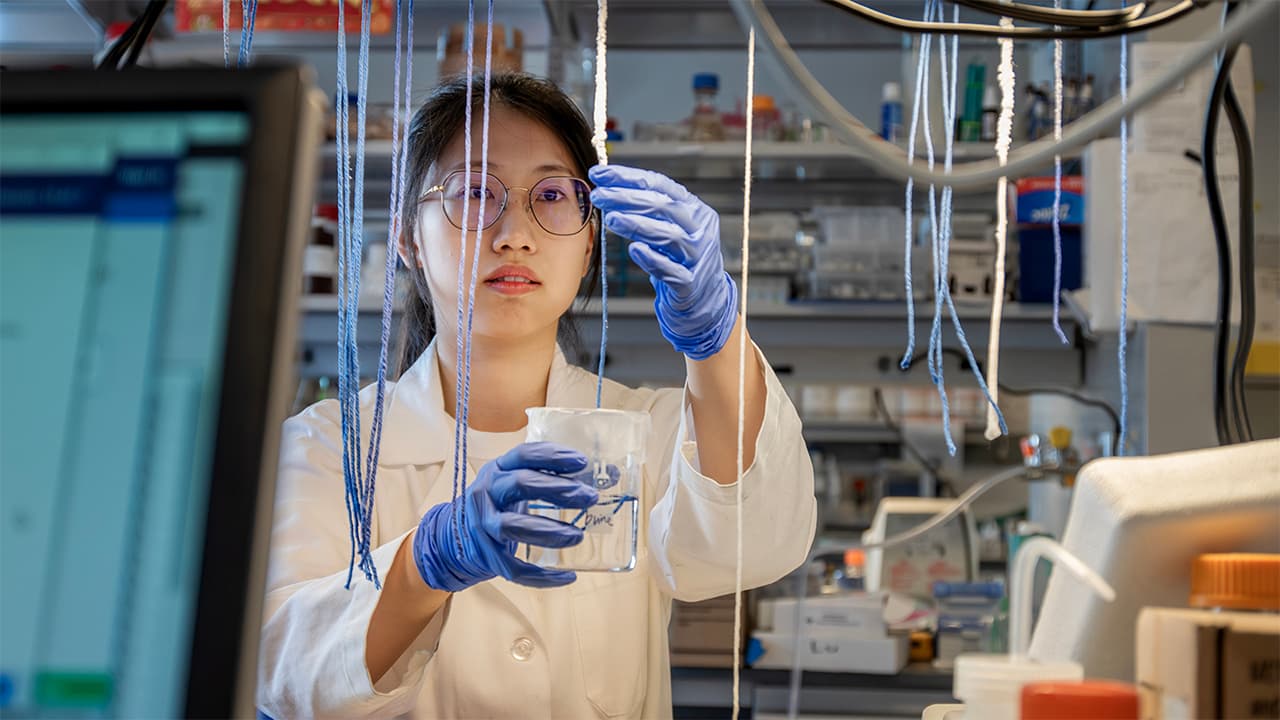Although lithium can be found in hard mineral ores, it’s more often extracted from very salty (aka briny) groundwater. The latter task could soon be much quicker and eco-friendlier, thanks to a new string-based extraction technique.
Currently, lithium-rich brine must be pumped into surface-located manmade ponds, where it’s left to sit for anywhere from several months to a few years. Throughout this period, the water itself evaporates into the atmosphere, leaving concentrated salts behind. Lithium is then harvested from those salts.
Besides taking a long time, this process also requires a lot of land for the large evaporation ponds. Additionally, in order to make such huge operations economically feasible, most of them must be located in the few places that have large and plentiful underground lithium brine deposits. These locations must also have arid climates that boost evaporation.

Doc Searls/CC 2.0
With such drawbacks in mind, Prof. Z. Jason Ren and colleagues at Princeton University have devised a new lithium-extraction process. It yields usable lithium within less than one month, occupies about 10% as much land as the ponds, and is worthwhile utilizing in a wide variety of locations where even modest amounts of lithium brine are present.
The technique incorporates strings made from inexpensive twisted cellulose fibers. Each of those porous fibers has a hydrophilic (water-attracting) core, surrounded by a hydrophobic (water-repelling) surface.
Arrays of these strings are hung over brine-filled reservoirs, with the bottom end of each string immersed in the liquid. Capillary action draws the liquid up the cores of the strings’ fibers, while the surfaces of those fibers push the liquid out into the air where its water content quickly evaporates.
As a result, each string ends up covered in lithium chloride and sodium chloride crystals that can be harvested by hand. Fortunately, the lithium and sodium aren’t intermixed. Because lithium salts are highly soluble, they crystalize toward the top of each string, while the less-soluble sodium salts (which are also useful) crystallize toward the bottom.

Bumper DeJesus
The scientists have already demonstrated a 100-string setup, and are now working on boosting the efficiency of the technique. They have also formed a spinoff company, PureLi Inc, to commercialize the technology.
“Our process is like putting an evaporation pond on a string, allowing us to obtain lithium harvests with a significantly reduced spatial footprint and with more precise control of the process,” said study co-author Dr. Sunxiang (Sean) Zheng. “If scaled, we may open up new vistas for environmentally friendly lithium extraction.”
A paper on the research was recently published in the journal Nature Water.
Source: Princeton University
Source of Article